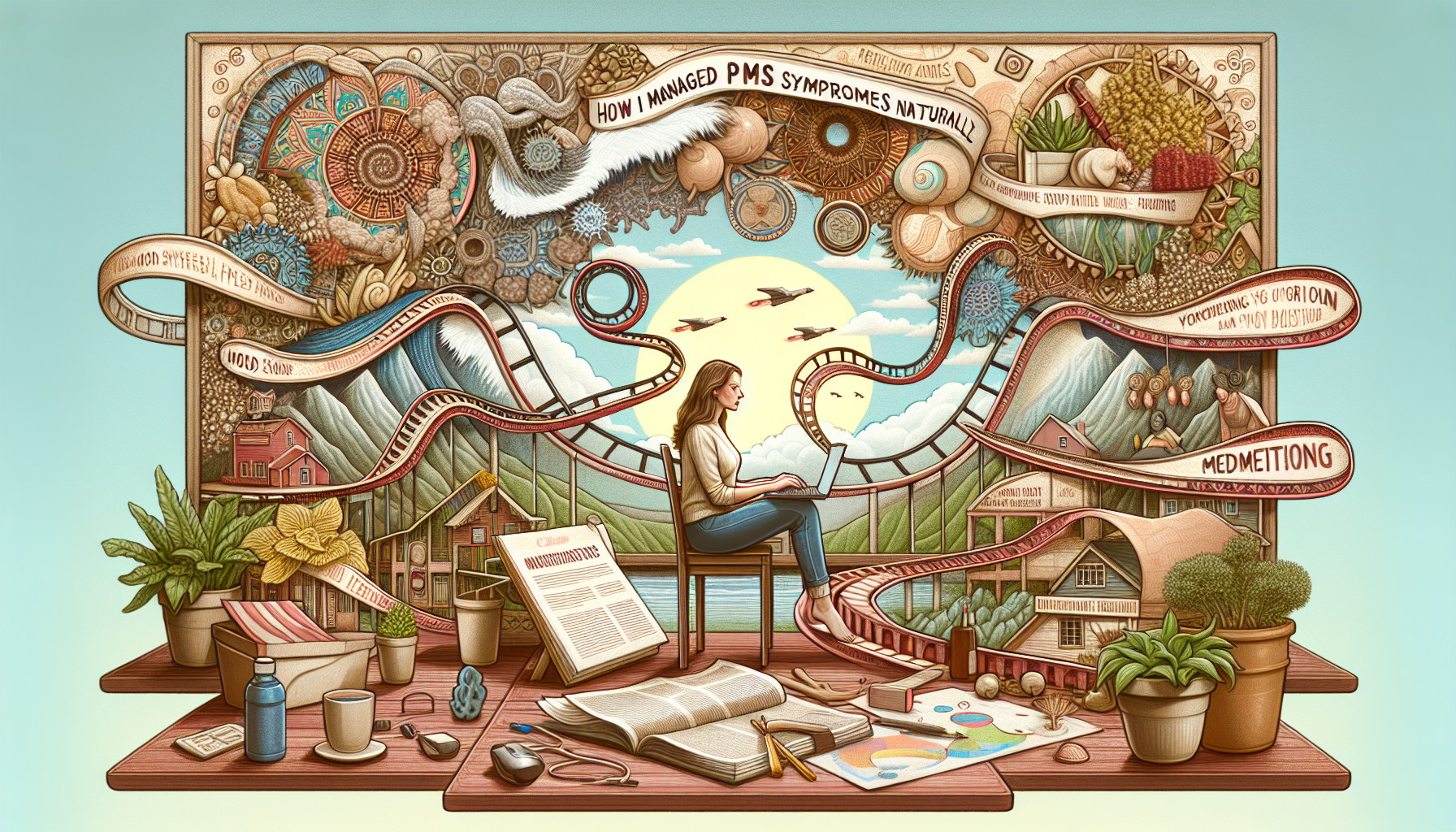How I Managed PMS Symptoms Naturally
Understanding PMS and My Journey
Dealing with Premenstrual Syndrome (PMS) can feel like a rollercoaster. I’ve been there, experiencing the mood swings, bloating, and fatigue that come with the territory. Over the years, I’ve experimented with various methods to ease these symptoms, and I’ve found that managing PMS naturally can be both effective and empowering. My journey began with a desire to understand my body better and find solutions that didn’t involve medication.
Nutrition: My First Line of Defense
I started by overhauling my diet. I learned that certain foods could either exacerbate or alleviate my symptoms. For instance, I cut down on caffeine and sugar, which I found to be major triggers for my mood swings and energy levels. Instead, I focused on a diet rich in whole foods, particularly those high in calcium and vitamin D. Studies have shown that these nutrients can help reduce the severity of PMS symptoms. Research on dietary interventions for PMS suggests that calcium intake can significantly improve mood and physical symptoms.
I also incorporated more omega-3 fatty acids into my diet, found in fish like salmon and in flaxseeds. These have anti-inflammatory properties and can help with the mood and cognitive symptoms of PMS. I made sure to have a serving of fish at least twice a week, and I sprinkled flaxseeds on my salads and smoothies.
Exercise: Moving My Way to Relief
Physical activity became another cornerstone of my PMS management strategy. Regular exercise not only helped me maintain a healthy weight but also boosted my mood and reduced stress. I found that a mix of cardiovascular activities like jogging and strength training worked best for me. A study published in the Journal of Affective Disorders highlighted that regular physical activity can significantly decrease the severity of PMS symptoms.
I made it a point to exercise at least 30 minutes a day, five days a week. On days when I felt particularly low, I opted for yoga, which not only helped with my physical symptoms but also provided a mental break, helping me manage stress and anxiety.
Herbal Remedies: Nature’s Helpers
Herbal remedies also played a significant role in my natural approach to managing PMS. After consulting with a naturopath, I started taking chasteberry (Vitex agnus-castus), which has been used for centuries to help with hormonal imbalances. Clinical trials have supported its effectiveness in reducing PMS symptoms like irritability and breast tenderness. A review of chasteberry for PMS confirmed its potential benefits.
I also experimented with evening primrose oil, which contains gamma-linolenic acid (GLA), known for its anti-inflammatory properties. I found it particularly helpful in reducing breast pain and bloating.
Mindfulness and Stress Management
Lastly, I incorporated mindfulness practices into my daily routine. Stress can exacerbate PMS symptoms, so finding ways to manage it was crucial. I started practicing meditation for 10 minutes each morning and evening, which helped me stay grounded and calm. Additionally, I kept a journal to track my symptoms and emotions, which gave me insights into my cycles and helped me anticipate and prepare for my PMS days.
I also tried acupuncture, which many women have found beneficial for PMS. While the scientific evidence is mixed, I found it to be a relaxing experience that helped reduce my stress levels and, consequently, my PMS symptoms.
Through these natural methods, I’ve managed to significantly reduce the impact of PMS on my life. It’s been a journey of trial and error, but the results have been worth it. By listening to my body and making informed choices, I’ve found a way to live more comfortably with PMS. If you’re struggling with similar symptoms, I encourage you to explore these natural remedies and find what works best for you.

